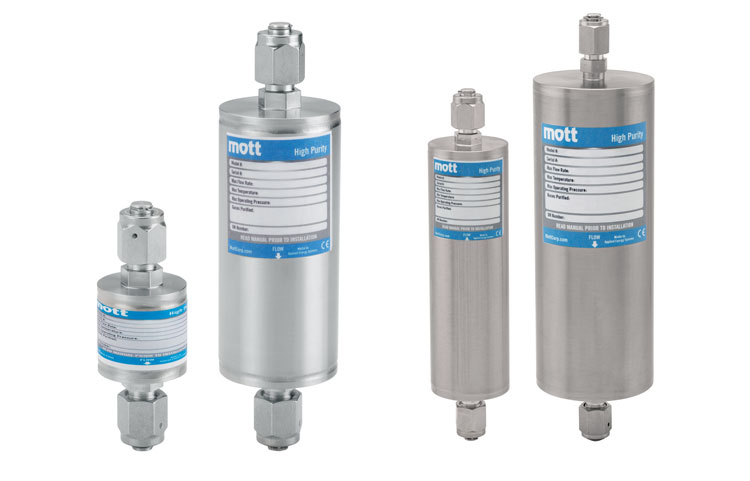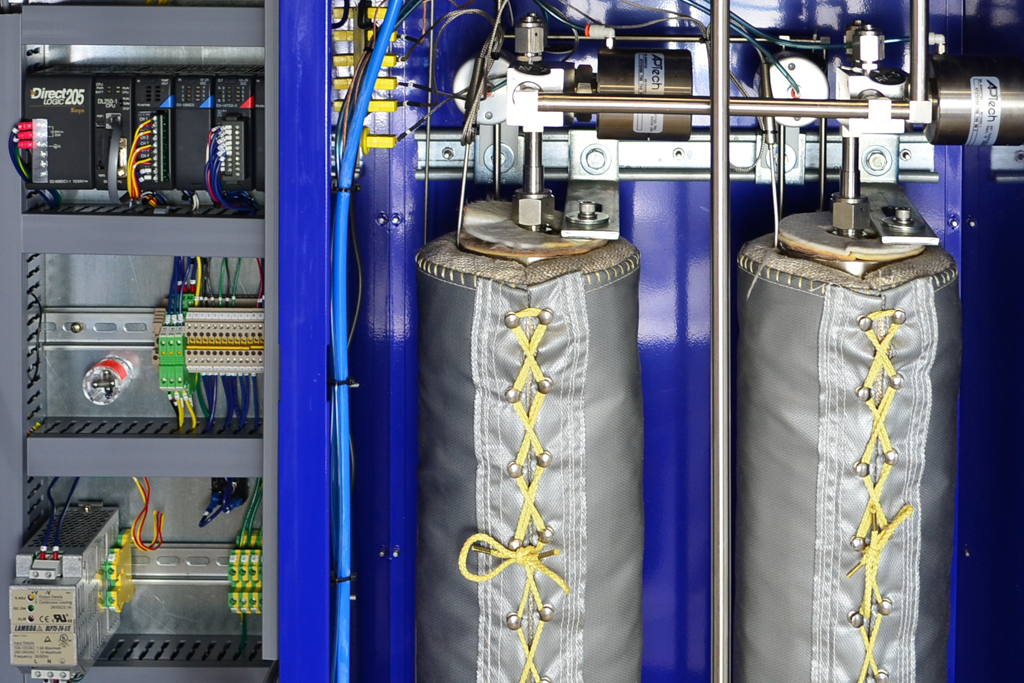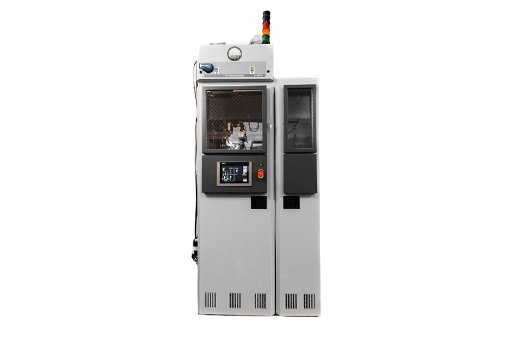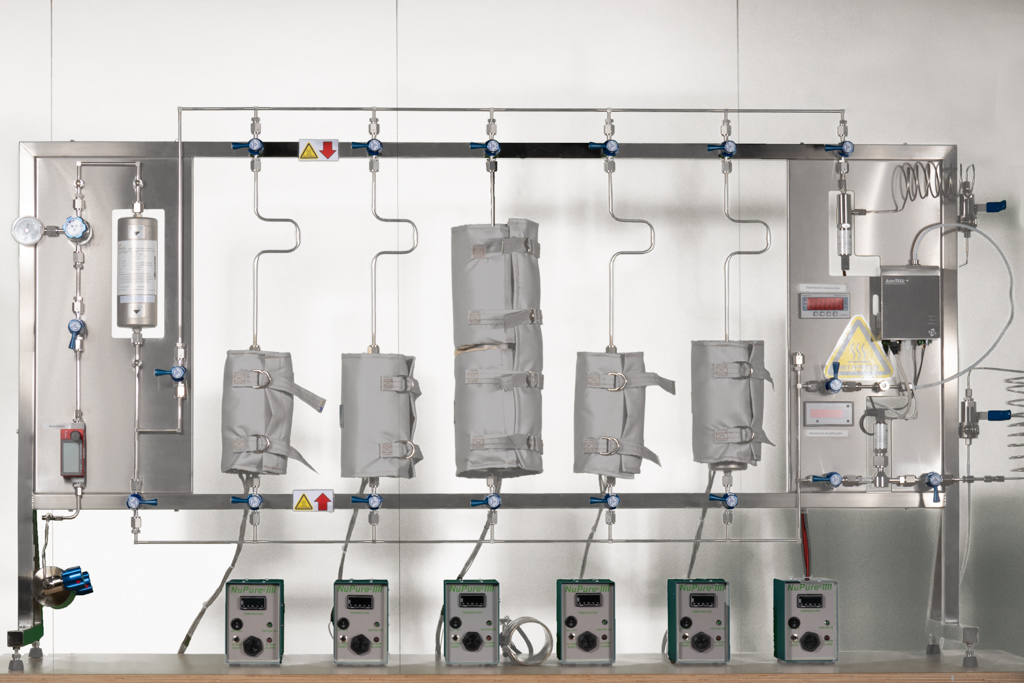E-learning gas purity
Part 2 - Which purifier medium in which situation?
From semiconductors and electronics to clean energy and solar power, universities and industrial manufacturing, countless industries rely on high or ultra-high purity process gases to support their mission-critical work. In this second part of our e-learning, we take a closer look at gas purification media, chosen specifically for the impurities to be removed. Missed the first part of our e-learning? That one was about the three primary technologies for physical gas separation. Read part 1 back here.
What's in a gas purifier?
Let's start with the basics. There are a number of materials, or media, that can be used in a gas purification vessel to remove specific impurities. The key point of this e-learning is to know that the media is specific to both the desired gas and the impurity to be removed. Therefore, the medium used to remove moisture is different from the medium used to remove oxygen. And those materials can be different again once the process gas changes. So a moisture-removing pufifier cannot simply be incorporated into any process line.
Many types of gas purification media in Pressure Swing Adsorption type purifiers can be highly reactive. Especially when compared to media used in lower-order gas separation (e.g., gas preparation). Activated nickel is an example of a highly reactive media: if even a percentage amount of oxygen flows through this media, it can cause an exothermic reaction that can reach more than 1000°C.
Therefore, it is vital for operator safety and process integrity that the proper media be selected for target impurities, and that strict safety protocols and controls be in place to properly use and store sensitive purification media. Because they are hazardous materials for fire and explosion, there are also restrictions around transportation of purifiers. Many pufifiers cannot be transported by air freight. In this e-learning, we have compiled examples of common impurities and the most appropriate purification media for their removal.
The impurity: Moisture
The purification medium: zeolites
Principle: physisorption
In applications such as industrial production, where 5Ns purity is required, moisture is the most common impurity to be removed. In such cases, zeolites, which can be easily hydrated and dehydrated, are an ideal purification medium. Through physisorption, the physical bonding of gas molecules to a surface, moisture is removed from the gas as it flows through the zeolite.

Illustration: raw zeolite before it's processed for application in a purifier
What are zeolites?
Zeolites belong to the aluminosilicates and are composed of compounds of oxygen, silicon and aluminum. Zeolite is a 100% natural volcanic clay mineral. This clay mineral was formed hundreds of thousands of years ago as volcanic ash clouds ended up in salty water from seas and lakes. This produced a clay layer that gradually turned into a soft porous rock: Zeolite.
Natural zeolites come in many types and qualities, and are mined extensively in several places around the world. About 60 different types of natural zeolites can be distinguished. In addition, more than six hundred synthetic zeolites have now been manufactured in laboratories, each with specific properties. The petrochemical industry is a large consumer of zeolite.
Zeolites for gas purification
For gas purifiers, it is really essential to choose the right zeolite based on the gas being used. The most commonly used are: clinoptilolite (the most common natural zeolite), chabazite, mordenite and erionite. For optimal results, it is necessary that the properties of the selected zeolite are matched to the properties of the gas. In the case of improper selection of zeolite, the following consequences may result:

- Saturated moisture from the improper zeolite can generate heat in the purifier.
- Improper pore size can negatively affect efficiency and power.
- Incompatibility of the zeolite with corrosive and some other gases affect performance and also compromise safety.
The impurities: oxygen and carbon monoxide
The purification medium: Metal catalyst
Principle: chemisorption
In cases where oxygen or carbon monoxide must be removed, a wide range of metal catalysts such as nickel, copper and palladium are used. These metals are often used not in their pure elemental form, but as powders sitting on zeolites in amounts as low as 0.5%. In this case, the zeolites have the function of increasing the surface area.
The removal of the targeted impurities relies on chemisorption, in which strong electrical bonds are formed between the surface and the adsorbate. Unlike physisorption, in which Van der Walls forces create weak bonds between the gas impurities and the surface, chemisorption leads to the formation of a distinct chemical species on the adsorption surface. For example, when O or CO is removed from nickel, nickel oxide and nickel monoxide are formed, respectively. Hydrogen is then introduced at elevated temperatures, which reacts with the catalyst to reduce the carbon and oxygen bonds and leave a pure nickel surface. Both types of purifiers are thus regenerable:

Illustration: zeolite processed to maximize surface area for metal catalysts.
- Chemisorption purifiers are regenerated by flushing at elevated temperature with hydrogen.
- Physisorption purifiers are regenerated by flushing at elevated temperature with a dry (process) gas.
Impurities: Methane and nitrogen
The purification medium: zirconium alloy with rare earth metals
Principle: chemical reaction
The removal of methane and nitrogen requires the use of rare earth alloys. Due to the highly reactive nature of rare earth metals with impurities, these applications require even more care to avoid exothermic reactions with temperatures exceeding 2,000°C.
In most cases where methane and nitrogen are removed, the purification medium is based on zirconium. The alloy is then heated to temperatures above 300°C, where impurities are adsorbed to the surface and become a permanent part of the alloy. Because of the high temperatures and reactive nature of the gases, operators working with rare earths require training and strict procedures. Additional sensors are used and process monitoring and control is robust. The components around the purifier and the electrical system must also withstand high temperatures.
Purifiers based on zirconium alloys are therefore not regenerable.

Illustration: Pure zirconium rods, before machining for application in purifiers.
Conclusion: the purification technology for every purification standard
Many impurities. Many media. Designing purifier solutions that meet the strictest standards for gas purity while also ensuring process safety is a complex story, it turns out. Another conclusion must be that the use of purifiers is not without danger. Accidentally sending the wrong gas through a purifier can cause extreme heating. And because of the special compositions, many purifier media are "Classed dangerous goods" and therefore should not be transported by air freight.
Subcategories

Point-of-use gas purifiers
Are installed directly at the place of the consumer. Usually with a flow rate of 0.1-100 slpm.
More information
Micro-bulk gas purifiers
Also called Area purifiers. Are often used to feed a number of machines with ultra pure process gas. Nominal flows 100-1200 slpm.
More information
Bulk gas purifiers
Gas supply in semicon fabs, or at industrial gas suppliers. Flows of 60-20.000 nm3/h.
More informationAny Questions?
More information about our products, services or looking for a custom solution?
Please contact our Sales Engineers.

WE MAKE YOUR TECHNOLOGY WORK
NL - Tel. +31 70 413 07 50
USA - Tel. +(1) 973 383 0691
CN - Tel. +86 (10) 56865822/56865835
TW - Tel. +886-(0)3-5600560
